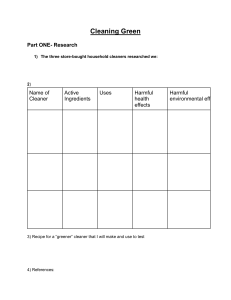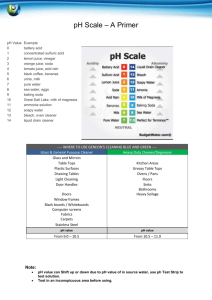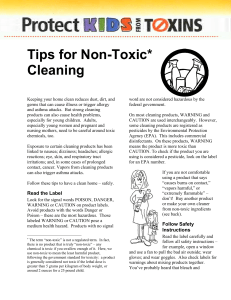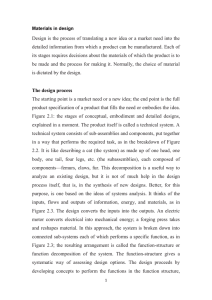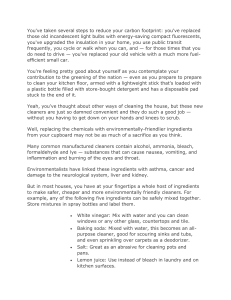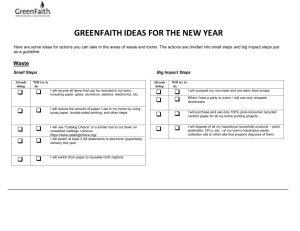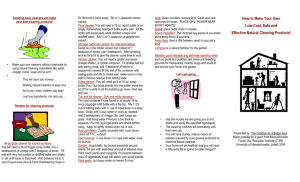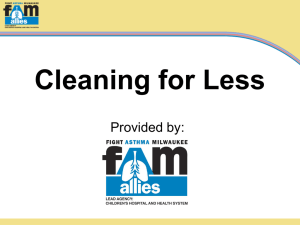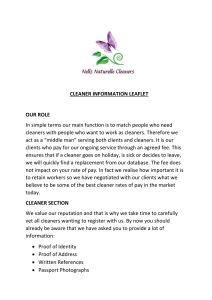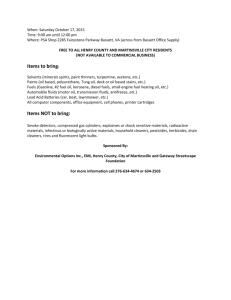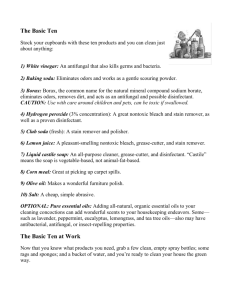20120223155442001
advertisement
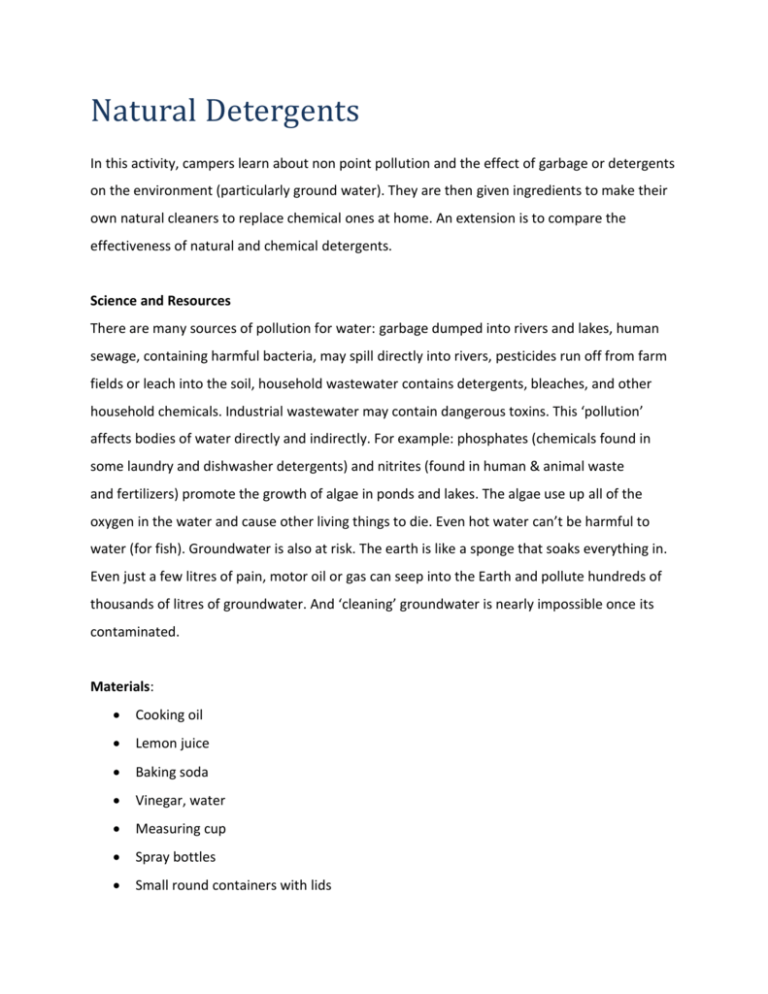
Natural Detergents In this activity, campers learn about non point pollution and the effect of garbage or detergents on the environment (particularly ground water). They are then given ingredients to make their own natural cleaners to replace chemical ones at home. An extension is to compare the effectiveness of natural and chemical detergents. Science and Resources There are many sources of pollution for water: garbage dumped into rivers and lakes, human sewage, containing harmful bacteria, may spill directly into rivers, pesticides run off from farm fields or leach into the soil, household wastewater contains detergents, bleaches, and other household chemicals. Industrial wastewater may contain dangerous toxins. This ‘pollution’ affects bodies of water directly and indirectly. For example: phosphates (chemicals found in some laundry and dishwasher detergents) and nitrites (found in human & animal waste and fertilizers) promote the growth of algae in ponds and lakes. The algae use up all of the oxygen in the water and cause other living things to die. Even hot water can’t be harmful to water (for fish). Groundwater is also at risk. The earth is like a sponge that soaks everything in. Even just a few litres of pain, motor oil or gas can seep into the Earth and pollute hundreds of thousands of litres of groundwater. And ‘cleaning’ groundwater is nearly impossible once its contaminated. Materials: Cooking oil Lemon juice Baking soda Vinegar, water Measuring cup Spray bottles Small round containers with lids Labels Markers Rags Paper towel Small wood surface to polish Commercial cleaning products: All purpose spray cleaner (ie. Shout), glass cleaner such as Windex, scouring powder such as Comet and a wood polishing cream or oil (one’s not jumping out at me) Procedure: 1. In a demonstration, get 2 volunteers at a time to come up to the front. Have several rounds of a Clean Off” with two mystery cleaners (one is homemade, one is not). For example, have a small piece of glass or plexiglass that has fingerprints or streaks on it. Have one student use the homemade cleaner and one use the store-bought cleaner to clean away. Compare the results of both, as well as other features such as cost (including $, as well the environment and our health). In your discussion, reveal some of the ingredients and how they may harm us or the environment. 2. After the demonstrations, have the campers choose two types of cleaners they would like to take home. Each camper will receive 2 take home containers: a 4 oz plastic spray bottle (for liquid cleaners) and a small Ziploc container (for powder cleaners). They can work at stations, with recipe cards, measuring cups and spoons and the ingredients to make their cleaners. 3. Campers can choose from the following options: a. all-purpose cleaner: 10 ml baking soda, 20 ml vinegar, 80 ml water b. glass cleaner: 1:5 ratio vinegar to water c. scouring powder: baking soda d. wood polish: 1:2 ration lemon juice to cooking oil Discussion: Why, if home-made cleaners are cheaper and better for us and the environment, do people use store bought ones more often?
